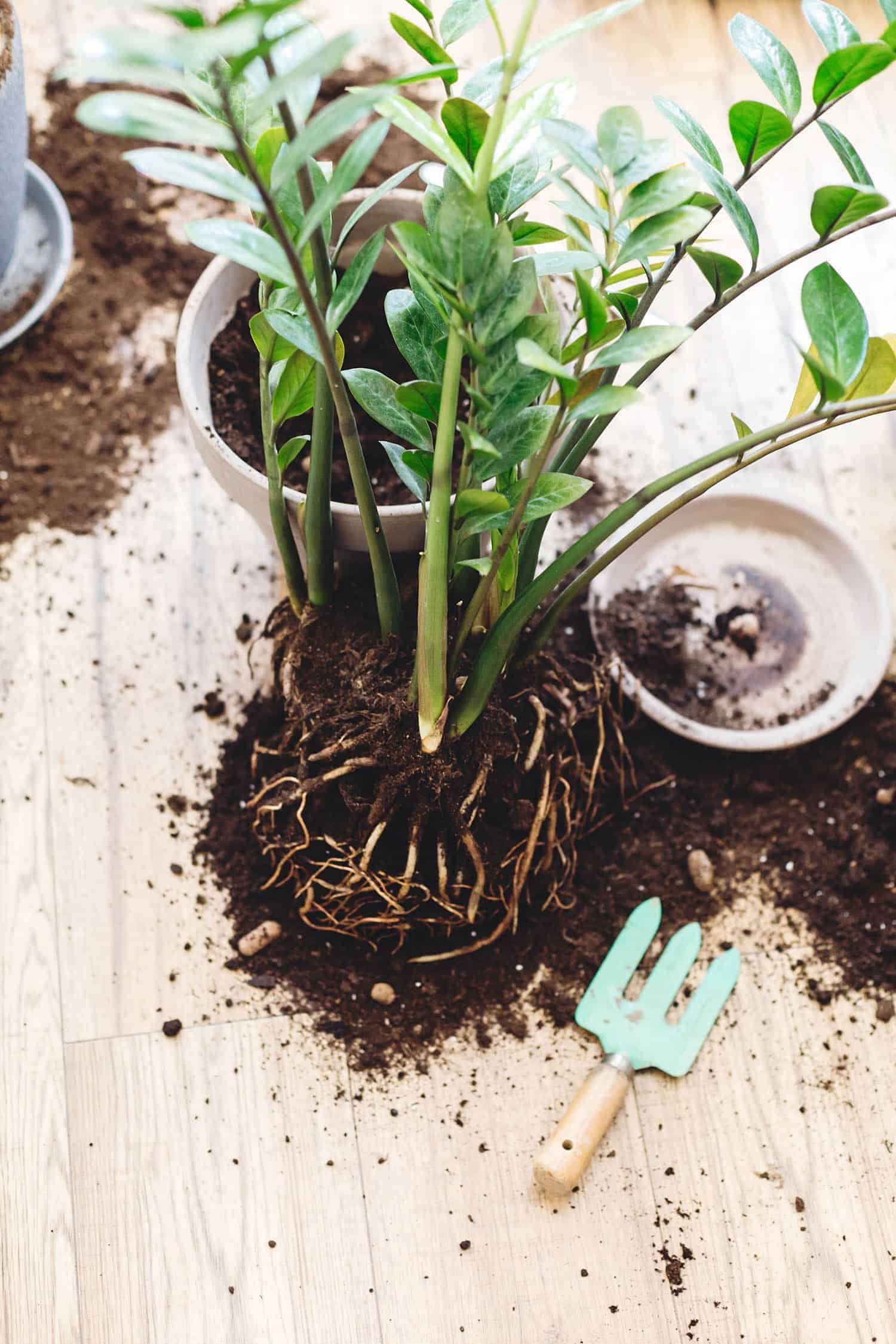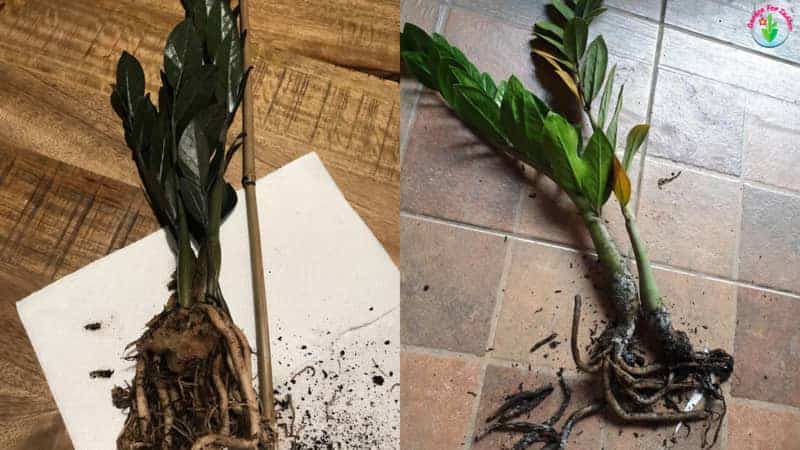Zz plant root rot is a common problem with this popular houseplant. The good news is that it is relatively easy to treat and prevent. The first step is to identify the problem.
Zz plant root rot is characterized by yellowing leaves, wilting, and eventually death of the plant. If you notice any of these symptoms, it’s time to take action.
The first thing you need to do is remove the affected plant from its pot.
Carefully inspect the roots for signs of rot. If they are black or mushy, they need to be removed. Once you have removed all the affected roots, rinse the plant off with clean water and allow it to dry completely before replanting in fresh soil.
- If you think your plant has root rot, the first step is to check the roots
- Gently remove the plant from its pot and examine the roots
- If they are brown or black and mushy, then your plant has root rot
- Cut away any affected roots with a sharp knife
- Place the plant in a new pot with fresh, well-draining potting mix
- Water regularly, but do not over-water, and make sure the pot has drainage holes to allow excess water to escape
ZZ Plant Root Rot? No Problem, Just Propagate!
What Does Zz Plant Root Rot Look Like
If you notice that your zz plant’s leaves are yellowing, wilting, or falling off, it could be a sign of root rot. Root rot is a serious problem that can kill your plant. Here’s what you need to know about this condition and how to treat it.
Root rot is caused by too much water around the roots of the plant. The roots start to decay and the plant can no longer get the nutrients it needs from them. This can happen if the pot doesn’t have proper drainage, if you water the plant too often, or if there’s been a lot of rain or flooding in the area.
Symptoms of root rot include yellowing or wilting leaves, stunted growth, and leaf drop. If you see these signs, it’s important to act quickly. Remove the plant from its pot and inspected the roots.
If they’re brown or mushy, it’s likely that the plant has root rot.
To save your zz plant, you’ll need to cut away all of the affected roots and repot in fresh soil with good drainage. You may also need to provide extra support for the plant until new roots have had a chance to grow back.

Credit: thehealthyhouseplant.com
Can Zz Plant Recover from Root Rot?
Yes, ZZ plants can recover from root rot. However, it is important to catch the root rot early and take action to save the plant. If the root rot has progressed too far, the plant may not be able to be saved.
Root rot is caused by a build-up of water in the soil around the roots of the plant. This can happen if the plant is overwatered or if the pot does not have proper drainage. The first signs of root rot are wilting leaves and yellowing stems.
If you see these signs, check the roots of your plant. If they are mushy or blackened, this is a sign of root rot.
To save your ZZ plant from root rot, start by removing it from its pot and carefully inspecting all of its roots.
Cut away any mushy or blackened roots with a sharp knife. Once you have removed all affected roots, replant your ZZ plant in fresh potting mix and be sure to provide adequate drainage. Water only when necessary and be sure not to overwater your plant moving forward.
How Can I Help My Zz Plant Root Rot?
If you think your ZZ plant has root rot, the first step is to check the roots. Root rot is often characterized by dark, mushy, or smelly roots. If you suspect your plant has root rot, it’s important to act quickly.
The sooner you catch and treat root rot, the better chance your plant has of recovering.
There are a few things you can do to help your ZZ plant recover from root rot:
1. Remove the affected roots.
Cut away any roots that are dark, mushy, or smelly. Be sure to disinfect your pruning tools before and after use to avoid spreading the disease.
2. Repot in fresh soil.
Be sure to use a well-draining potting mix and pots with drainage holes to help prevent future problems with root rot.
3. Improve air circulation around your plant. Make sure your plant has plenty of room to breathe and isn’t crowded by other plants or objects.
Consider moving it to a brighter location if it’s been growing in low light conditions.
4. Water carefully.
Can a Plant Recover from Root Rot?
If you notice your plant’s leaves drooping and wilting, it may be a sign of root rot. Root rot is caused by overwatering or poor drainage, which can lead to fungal growth. The first step is to improve the drainage around your plant.
If the roots are already rotted, you’ll need to trim them back to healthy tissue. You can then replant in fresh soil and water carefully. With proper care, your plant should recover from root rot.
How Do You Revive a Zz Plant Overwatered?
If you have overwatered your ZZ plant, don’t despair! There are a few things you can do to revive it.
First, try to assess the situation.
If the leaves are wilted and droopy, that’s a sure sign of overwatering. The soil should also be soggy and wet. If you catch the problem early enough, you may be able to save your plant by simply letting it drain and dry out.
Put it in a bright spot out of direct sunlight and let the excess water evaporate.
If your plant is already showing signs of root rot, then you’ll need to take more drastic measures. Cut away any affected roots and repot the plant in fresh, dry potting mix.
Be sure to provide good drainage and only water when the soil is dry to the touch. With some love and care, your ZZ plant will soon be back to its old self!
Conclusion
If you have a zz plant that is suffering from root rot, there are a few things you can do to try and save it. First, check the roots to see if they are discolored or mushy. If they are, you will need to trim away the affected roots.
Next, repot your plant in fresh soil and make sure the new pot has drainage holes. Water your plant deeply, then allow it to dry out completely before watering again. If your plant does not recover within a few weeks, it is likely too far gone and you will need to start over with a new plant.


